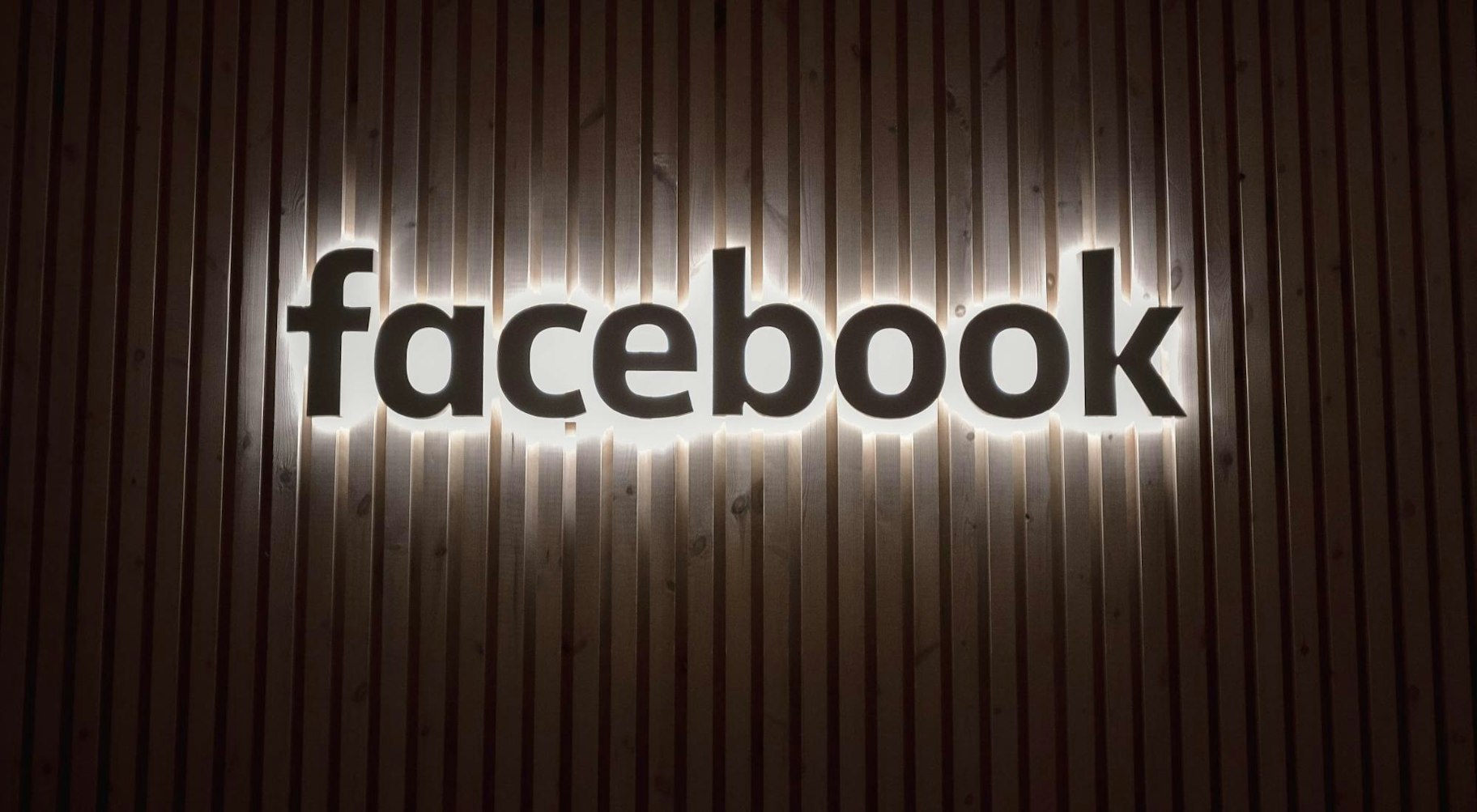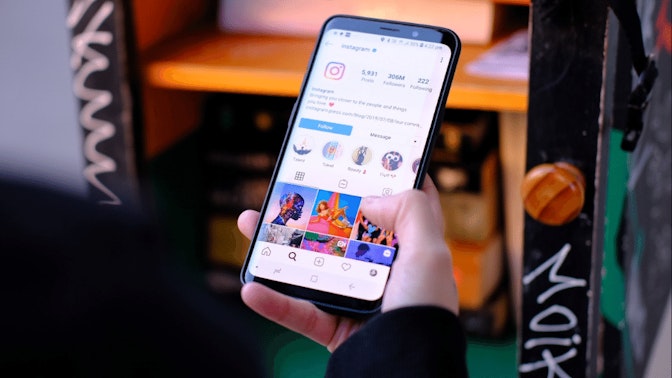Facebook ads level the playing field.
Any scrappy entrepreneur can use Facebook ads to land customers and scale their business. In fact, there are more than 1.6 billion people worldwide connected to small businesses on Facebook Pages.
But how much do Facebook ads cost in 2020?
Well, that’s a tricky yet a popular Facebook ads question – there are so many variables at play. Depending on your situation, your Facebook ads cost could be as much as $10 per click, or as little as 70 cents.
So how can you get an idea of how much Facebook advertising costs before diving in?
In this article, we’ll run through some industry benchmarks, how Facebook ads work, the key variables that affect charges, and strategies to reduce your Facebook advertising costs.
Let’s dive in.
Post Contents
- How Much do Facebook Ads Cost in 2020?
- How the Facebook Ad System Works
- Facebook Ads Work on an Auction
- You’ve Got Competition
- Two Things that Define Your Facebook Ads Cost
- Two Important Things to Bear in Mind
- 6 Key Factors That Influence How Much Facebook Ads Cost
- 8 Strategies to Reduce Your Facebook Ads Cost
- Summary: How Much Do Facebook Ads Cost in 2020?
- Want to Learn More?



How Much do Facebook Ads Cost in 2020?
A look at existing studies reveals that a ballpark Facebook ad cost for most industries is somewhere between $0.50 and $2.00 per click.
To get a better idea of how much Facebook advertising costs, let’s take a closer look at two of the more detailed studies available from WordStream and AdEspresso.
→ Click Here to Launch Your Online Business with Shopify
According to WordStream, the average cost-per-click for Facebook ads across all industries is $1.72.
However, this is certainly a skewed average thanks to some anomalies.
For instance, the finance and insurance industries have the highest average Facebook advertising cost at $3.77 per click.
Thankfully, not all industries have such a high average.
Apparel ($0.45 per click), travel and hospitality ($0.63), and retail ($0.70) have the cheapest Facebook advertising costs.
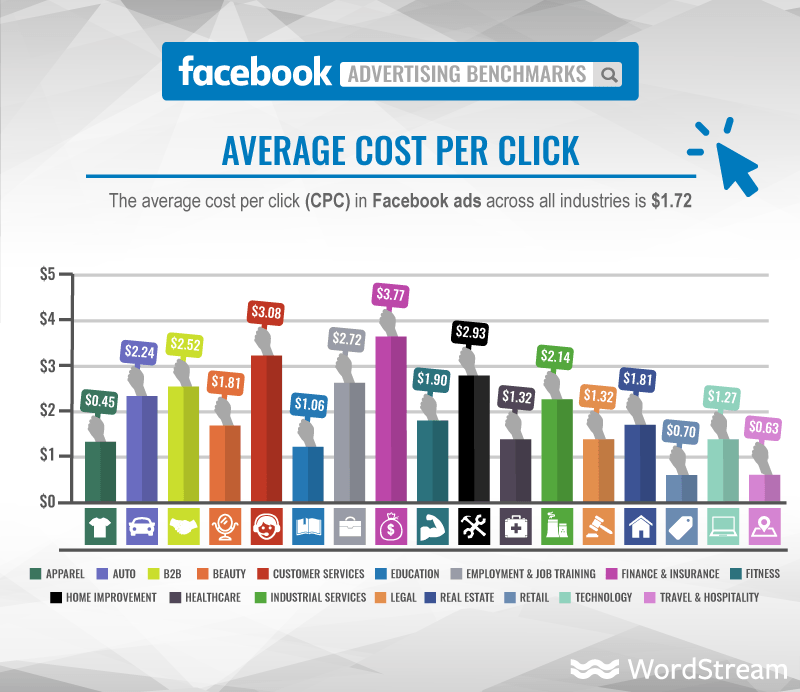
Now, according to AdEspresso, the average cost-per-click for all countries is $0.97.
The graph below shows the cost-per-click for each country in U.S. dollars, with the United States scoring an average Facebook advertising cost of $1.10 per click.
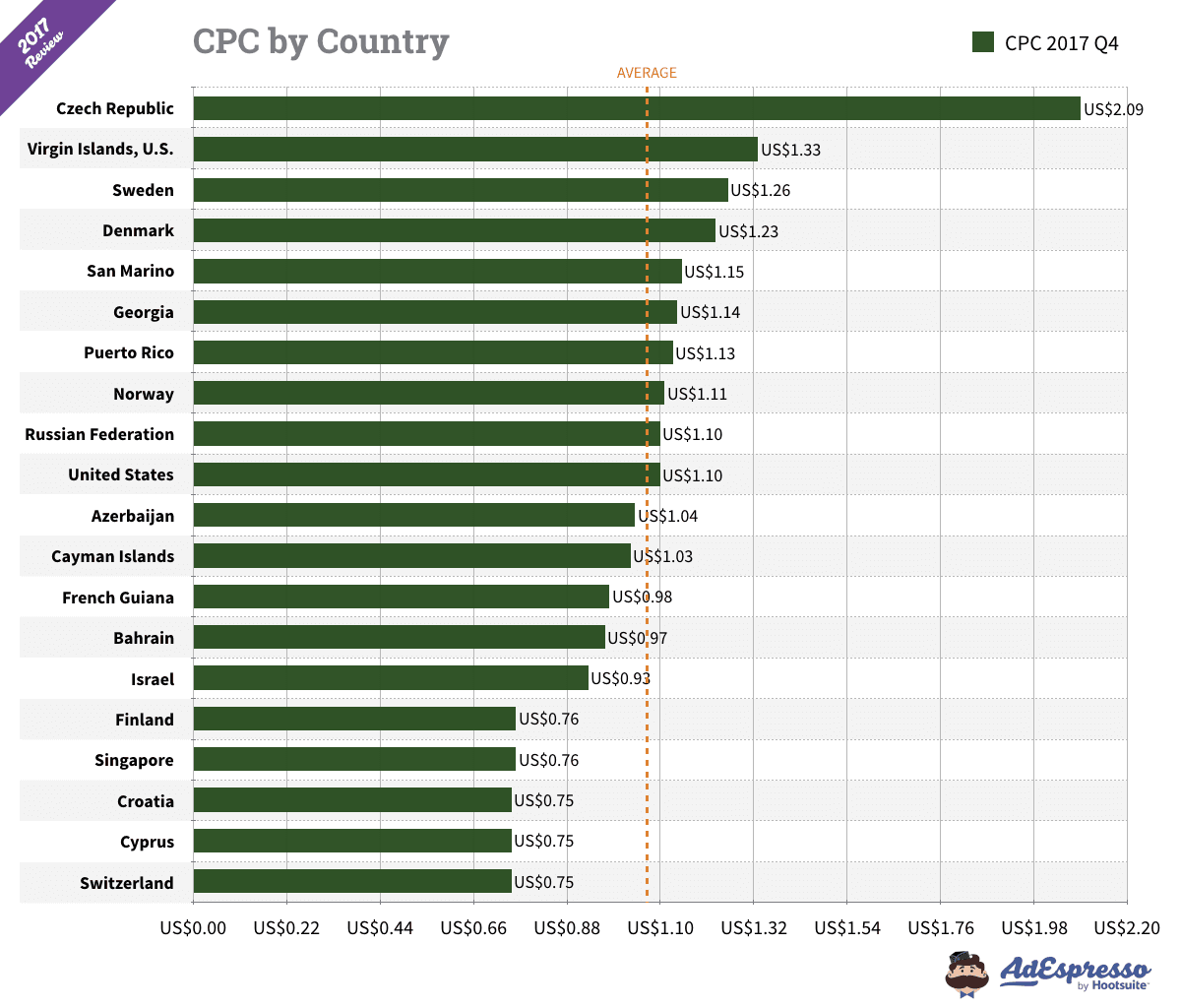
Remember, you should take these averages with a pinch of salt.
Still, now that we have some ballpark figures, let’s take a closer look at how you can estimate your own Facebook advertising costs.
How the Facebook Ad System Works
Let’s run through a quick overview of the Facebook ads system in relation to costs.
First things first:
Facebook Ads Work on an Auction
If Facebook bombarded users with ads, it’s likely they would use the social media site less often – not good.
So Facebook limits the number of advertisements that each user sees.
In other words, there’s only so much ad space available and there are many people that want to use it to grow a business.
That’s why you can’t just sign up and purchase an ad placement on Facebook.
Instead, advertisers must bid against each other to secure an advertising placement. In the simplest terms, whoever bids the highest gets to show their ad.
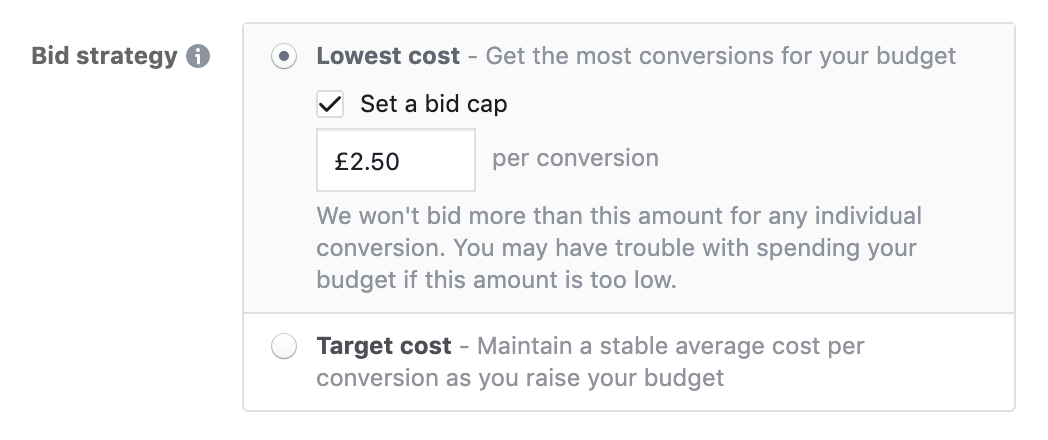
You’ve Got Competition
When you use Facebook advertising, you’re not just competing for ad space against your business competitors. You’re also competing against everyone else who wants to reach a similar target market.
For example, say that you sell women’s clothing products to young, health-conscious Millennials in America.
In this scenario, you won’t just be competing against other apparel brands.
You’ll also be competing against chemical-free makeup brands, local gyms trying to sell memberships, nutritional coaches promoting diet plans, and every other business with the same target customers.

When creating your ad, you can see your audience size change each time you add new targeting criteria.
Two Things that Define Your Facebook Ads Cost
Although there are countless variables at play, there are two surefire ways to define your Facebook advertising cost: your bid and your budget.
Your budget is the overall amount of money you’re happy to spend on a single ad set or campaign.
What’s more, Facebook provides two budget types:
- Daily Budget: This is the average amount you’re willing to spend on a campaign each day.
- Lifetime Budget: This is the amount you’re willing to spend during the entire campaign.
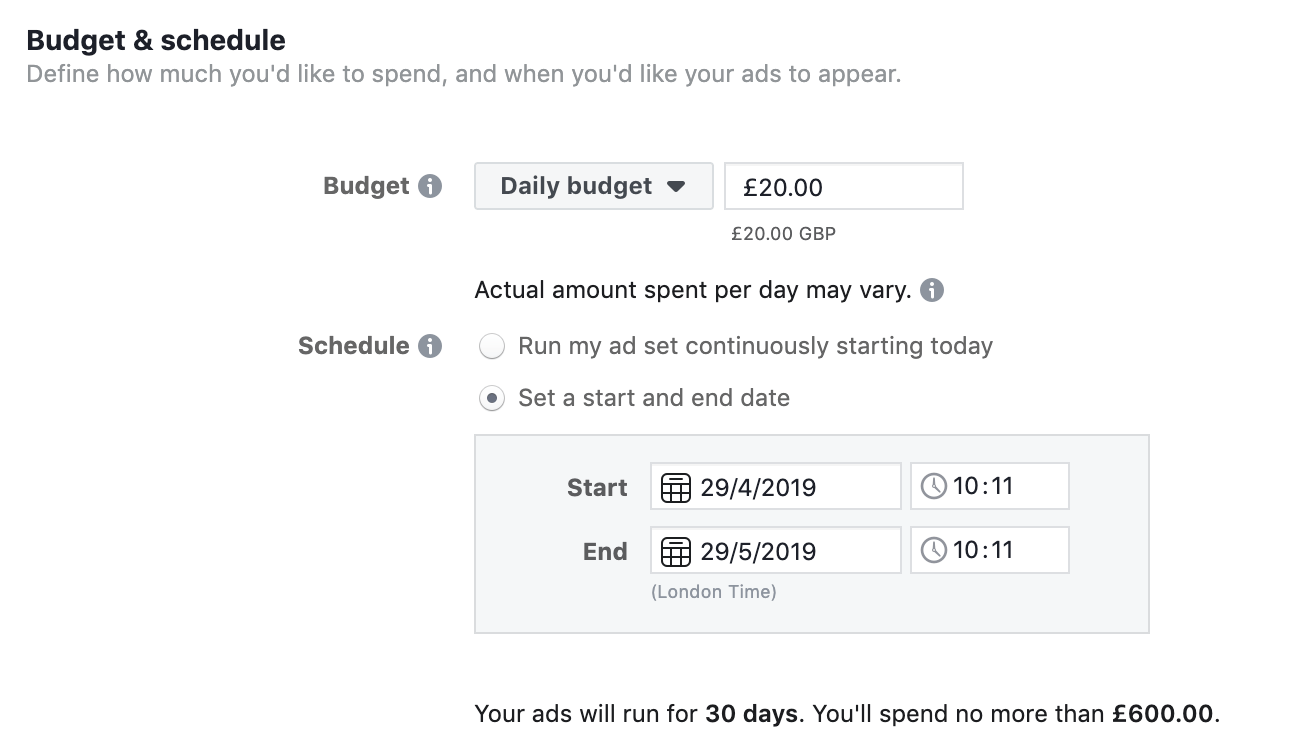
Your bid is how much you’re willing to spend to land an ad placement.
If you don’t choose a bid, Facebook will automatically calculate one based on your chosen budget and the duration of your campaign.
Two Important Things to Bear in Mind
Before we finish up this section, there are two key points to bear in mind when thinking about your Facebook advertising costs.
First, you’ll only ever pay a penny more than the nearest competitor’s bid.
This means that if you set your bid to $2 and the highest bid from a competitor is $1.22, you’ll only pay $1.23 for the ad placement.
Secondly, Facebook advertising costs can fluctuate – a lot.
One day your cost-per-click might be $1.23 and a week later it may have jumped to $3.12. So don’t “set it and forget it.” Keep an eye on your Facebook ad costs.
6 Key Factors That Influence How Much Facebook Ads Cost
As mentioned, there are a number of factors that affect your Facebook advertising costs, here’s a rundown of some of the most important variables.
1. Your Target Audience
People with certain demographic and psychographic profiles cost more to reach than others. So if you’re targeting a highly sought after audience, your Facebook ad costs will be higher.
It’s basic supply and demand.
As a result, you might be tempted to slim down your target audience to narrow the pool of your competition.
But beware.
Creating small target audiences can lead to higher costs because there are fewer placements available.
2. Your Marketing Objective
When creating an ad, Facebook will prompt you to choose a marketing objective.
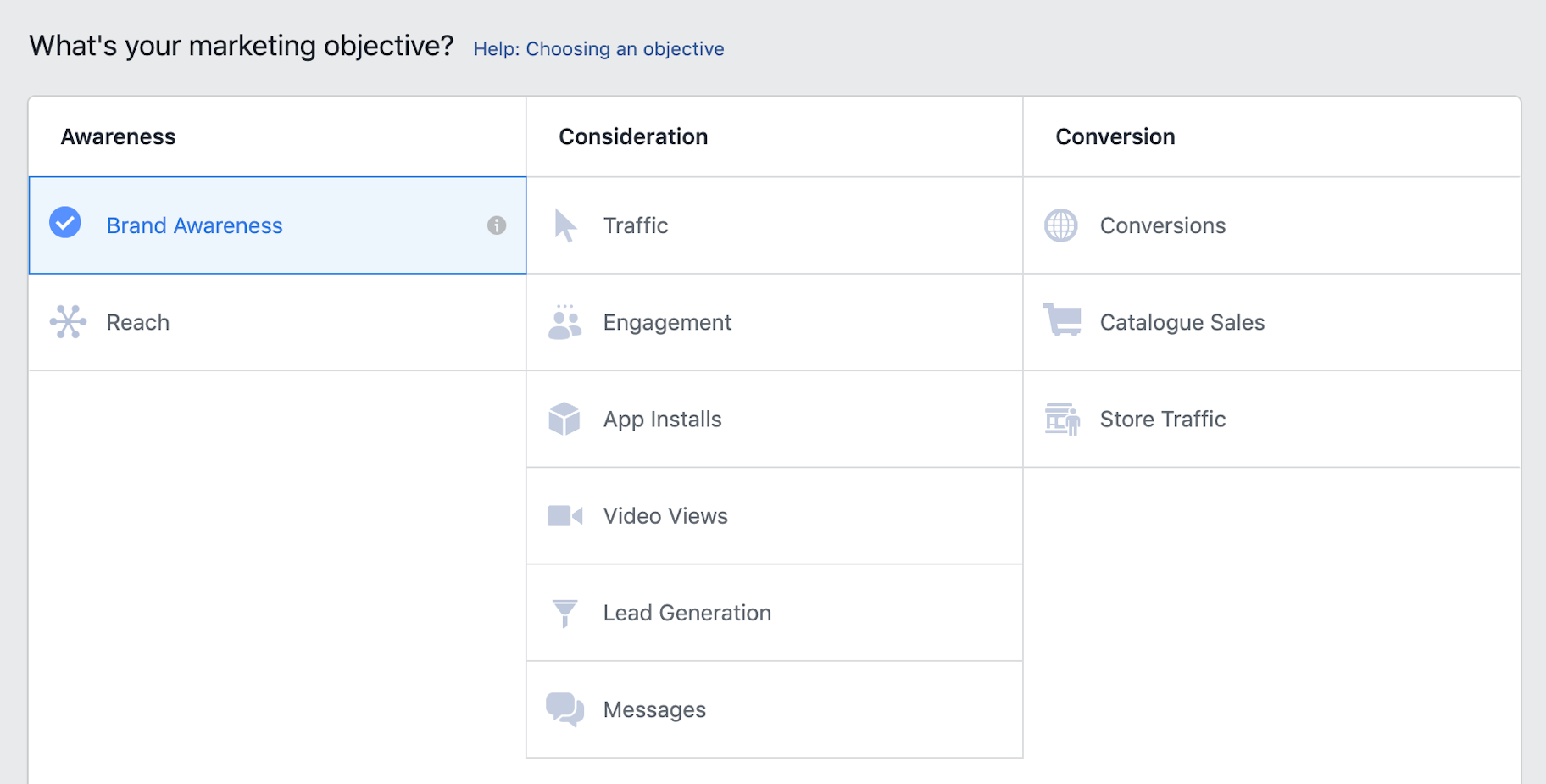
Your chosen marketing objective can heavily affect your Facebook advertising costs.
Generally speaking, landing sales will cost you more than simply promoting your brand. In other words, conversions will typically cost more than clicks, which will usually cost more than video views.
3. Your Competition
Arguably, this is the key factor that influences your Facebook ad costs.
Why? Basic economics: supply and demand.
If there were no other businesses trying to reach your target audience, there would be no demand and so your Facebook advertising costs would fall.
But let’s get back to reality.
Your Facebook advertising costs will largely depend on how many competitors you have, what they’re willing to spend, and what their relevance rates are.
4. When You Choose to Advertise
Competition increases during peak times.
As a result, you can expect your Facebook advertising costs to increase in the months leading up to Christmas or other holidays.
What’s more, the day of the week and even the specific hours that you advertise will also affect your Facebook ads cost.
5. Your Chosen Ad Placement
There are many different Facebook ad placements.
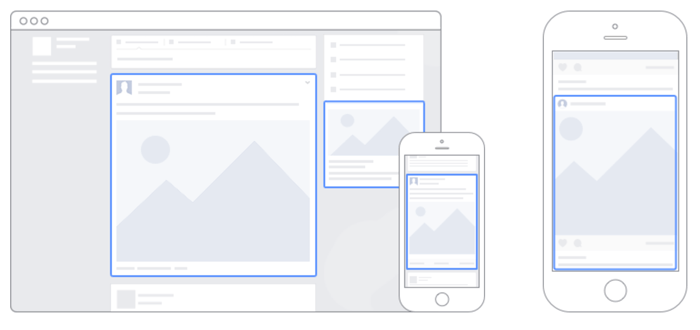
Here is a quick list of the Facebook ad placements available in 2020.
- Facebook
- Feeds
- Instant articles
- In-stream video
- Right column
- Marketplace
- Stories
- Instagram
- Feeds
- Stories
- Messenger
- Inbox
- Sponsored messages
- Audience Network
- Banner
- Interstitial
- Native
- Rewarded video
- In-stream video
Different Facebook ad placements cost more than others.
AdEspresso also found that Instagram placements are the most expensive at an average of $1.15 per click.
As you can see from the graph below, both Instagram Stories and Instagram Feed posts are more expensive than Facebook ad placements.
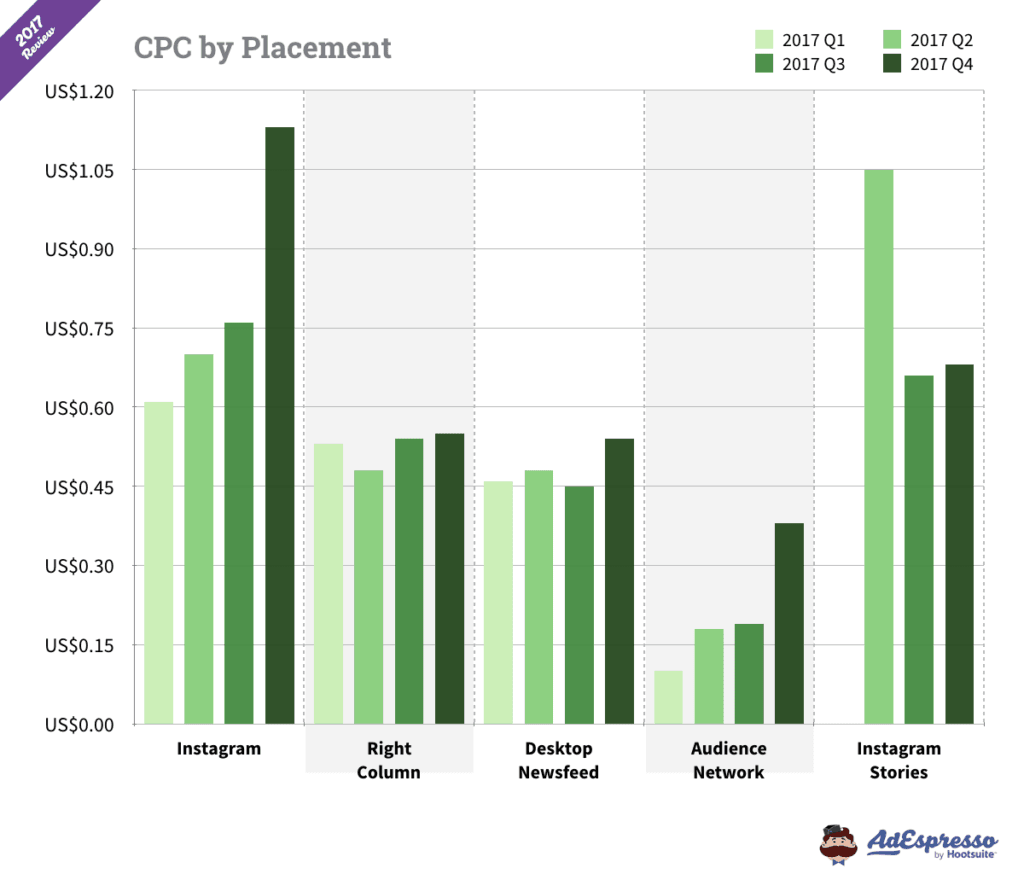
6. Your Relevance Score
Relevance score is a Facebook metric that scores how relevant your ad is to your target audience.
When users engage with your ad, its relevance score increases. However, if many users ignore your ad or click “this ad isn’t relevant to me” your score will go down.
This is extremely important.
If your ad gets a high relevance score, it’ll be favored by Facebook’s algorithm and can even cost less for the same placements.
8 Strategies to Reduce Your Facebook Ads Cost
Now that you understand the key factors at play, let’s look at how you can reduce your Facebook advertising cost.
While there are many factors outside of your control, these eight strategies are sure to help you get a higher return on investment (ROI).
First up:
1. Split Test
Split testing is the process of running the same ad campaign twice with a small alteration to test performance.
In the example below, you can see Gymshark running two ads with the same copywriting but different images.
This means they’re split-testing the image to see which one performs best.
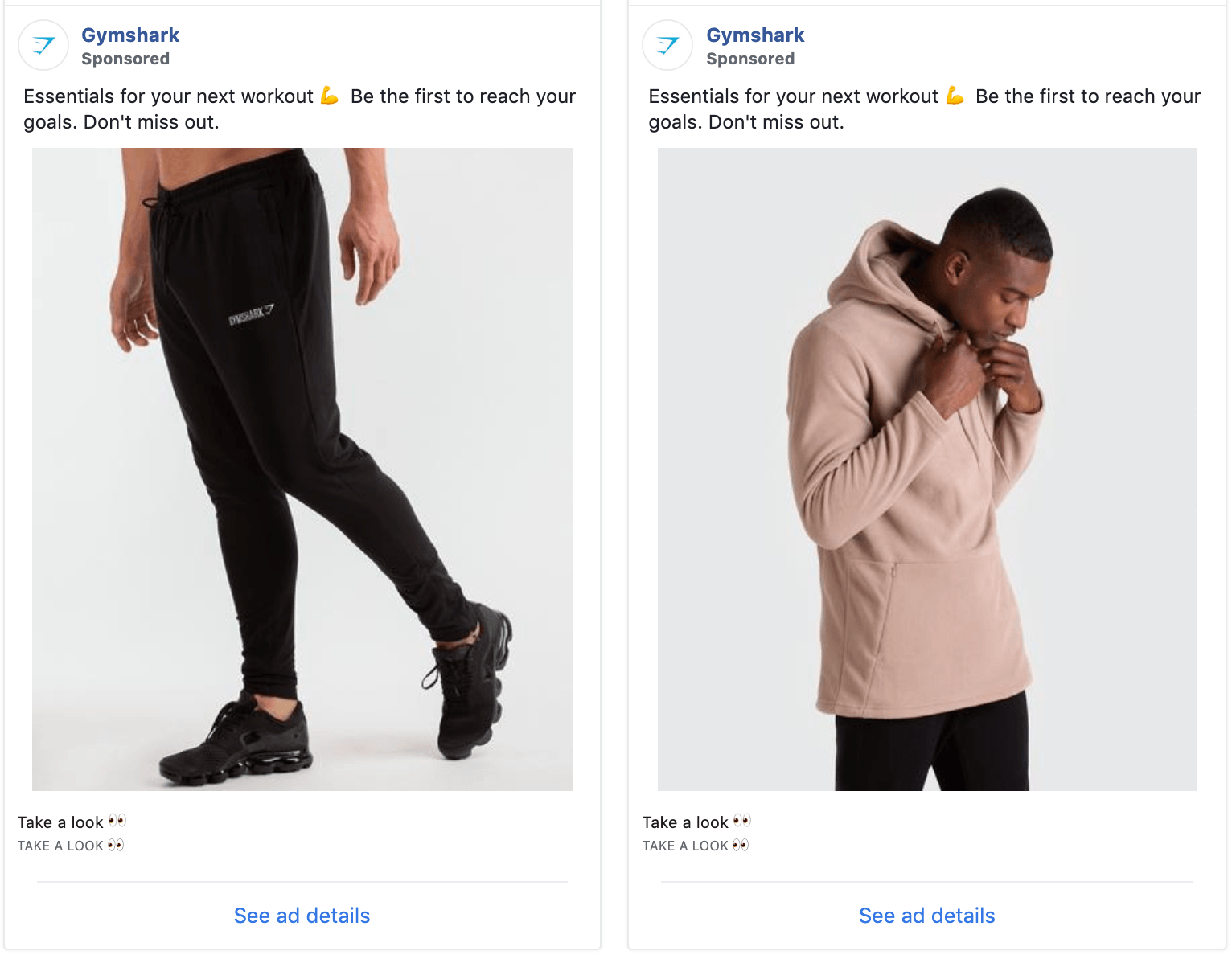
Split-testing helps you to continually improve your ads so they perform better. This will reduce your Facebook advertising costs by improving your return on investment.
Far too many advertisers create a great Facebook ad campaign and move on.
Don’t do this.
Some businesses have managed to reduce their Facebook advertising costs by 96 percent just by changing the copy! In other words, there’s really no way to tell what works best until you try it.
Plus, the Facebook Ads Manager makes it easy to run a split test.
In the “Traffic” section, just use the “Create split test” toggle. Then, Facebook will divide your budget equally between your two ads and allow you to measure their performance.
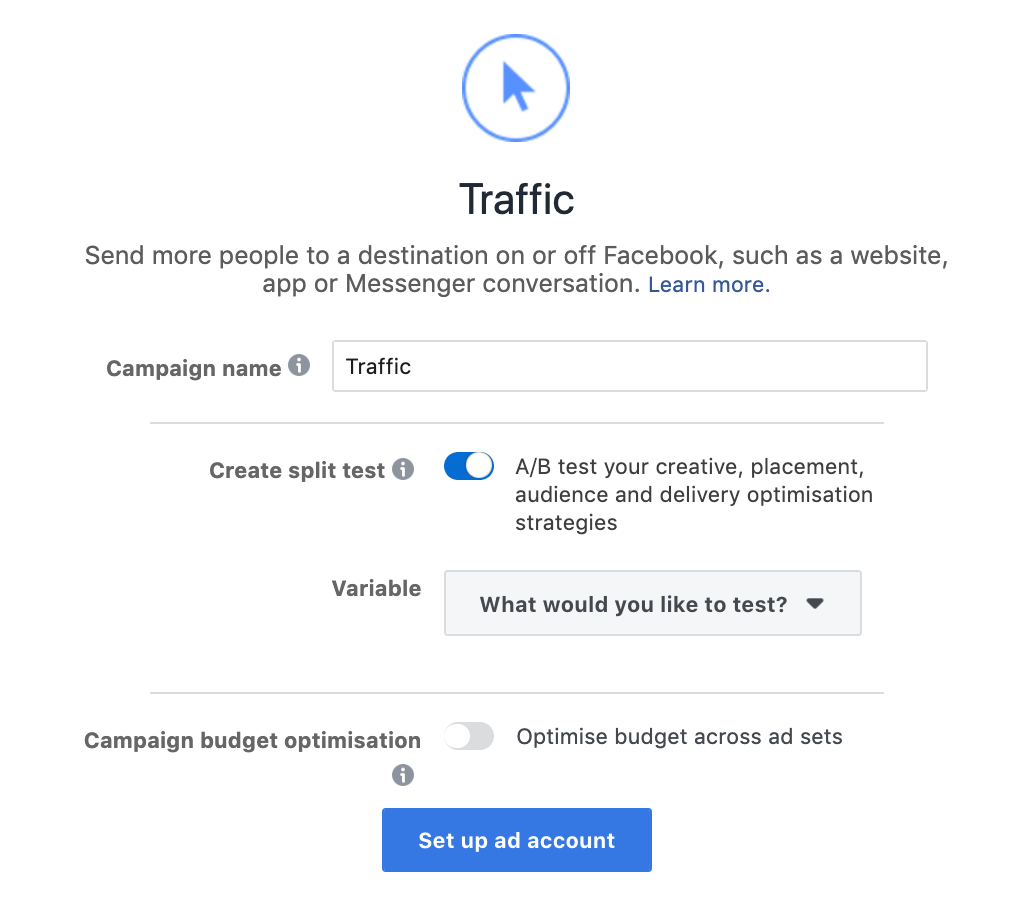
Ideally, you’ll want to test every part of your ad individually but start by testing your image and text.
2. Focus on One Objective at a Time
When you go to create a Facebook ad, the first thing you’ll need to do is choose an objective.
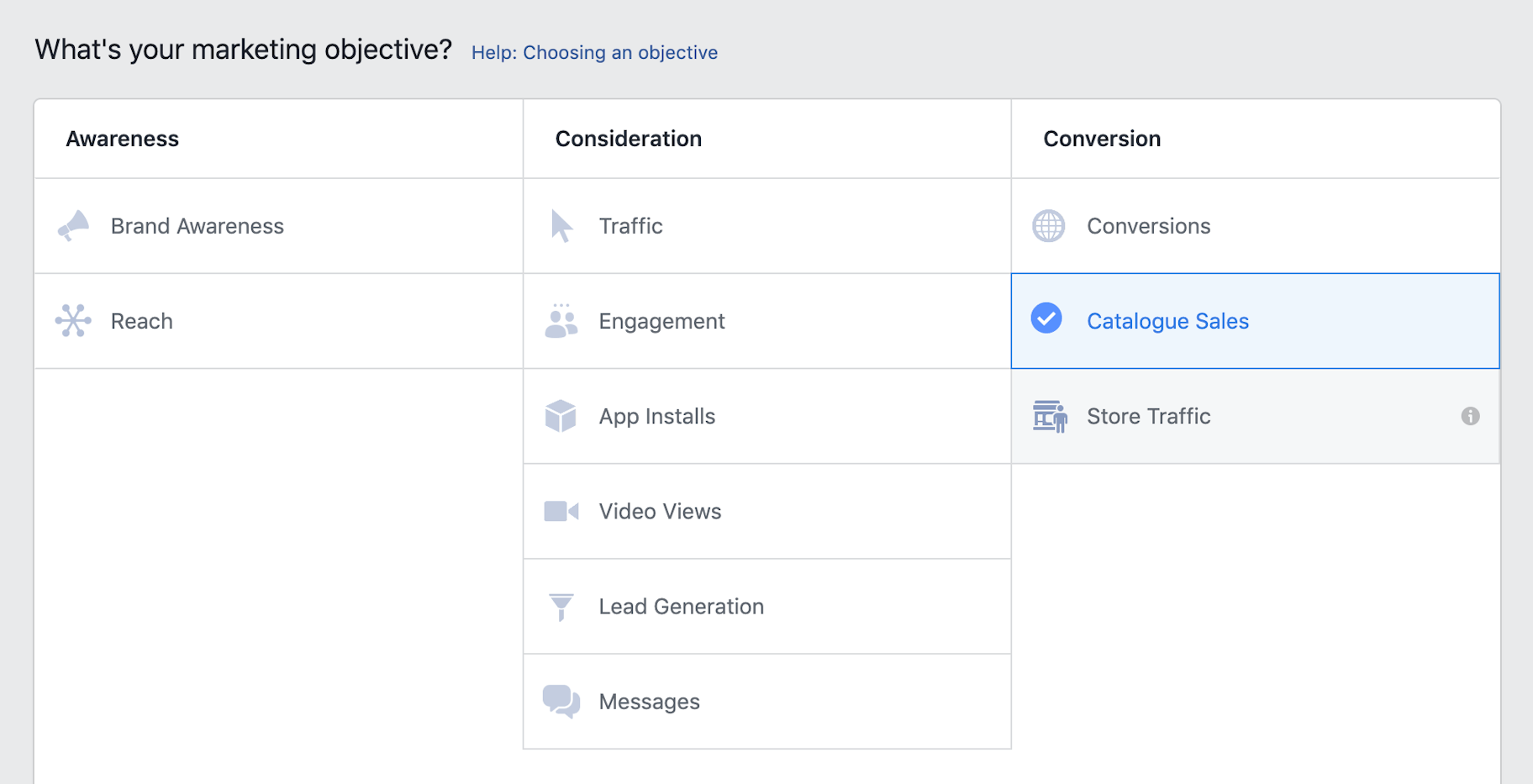
Whichever you choose, make sure your entire ad campaign is in line with your objective.
Trying to combine two objectives into one ad won’t get you more for your money. Actually, it’ll almost certainly increase your Facebook advertising costs.
Why?
Every objective has a different function and requires different messaging, target audiences, copy, and images.
You need to keep your ads laser-focused.
When you focus on one objective at a time, you can ensure that your image, copy, audience, and call-to-action will hit the spot and convert.
If you want to focus on more than one objective, create multiple campaigns and ads.
Ultimately, this will reduce your Facebook advertising costs.
3. Maintain a High Relevance Score
The relevance score reveals how much your ad resonates with your target audience.
A high relevance score means that your ad is receiving positive feedback and healthy levels of engagement, clicks, and conversions.
High scoring ads will lower your Facebook ads cost.
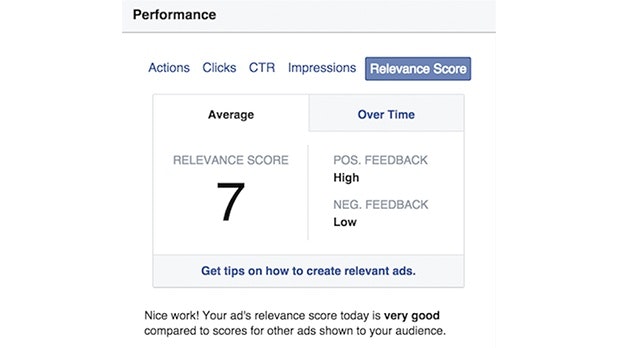
The key here is to simply create great ads that resonate with your target audience.
4. Keep an Eye on Frequency
Facebook scores every ad on “Frequency.” This metric tells you how often the same user has seen your ad.
If the same people see your ad multiple times, one of two things is happening:
- You’re not reaching new people
- The people you’re reaching keep seeing your ads but aren’t converting
The higher your frequency, the less engagement, clicks, and conversions you’ll get. As a result, your Facebook advertising costs will increase.
It’s true that some people will need to see your ads a few times before they click and convert. However, interested shoppers usually only need to see it one or two times.
So aim to keep your ad frequency to three or under.
If your frequency score gets too high, stop, adjust, or terminate the campaign.
5. Keep Your Ads Fresh
You need to update your ads and create new ads regularly.
Aside from helping to maintain low-frequency scores, it’s just good practice. No matter how great your ad campaign is, it’s likely to lose its impact eventually.
However, this doesn’t mean you need to start from scratch each time.
You can keep the same audience, but change your offer, image, and copy. What’s more, take the lessons you learned from split testing and apply them to your new advertising campaigns.
Let’s look at an example from the sports phone mount business Quad Lock.
In the ads below, they use the same copy and call-to-action but have switched up the visuals.
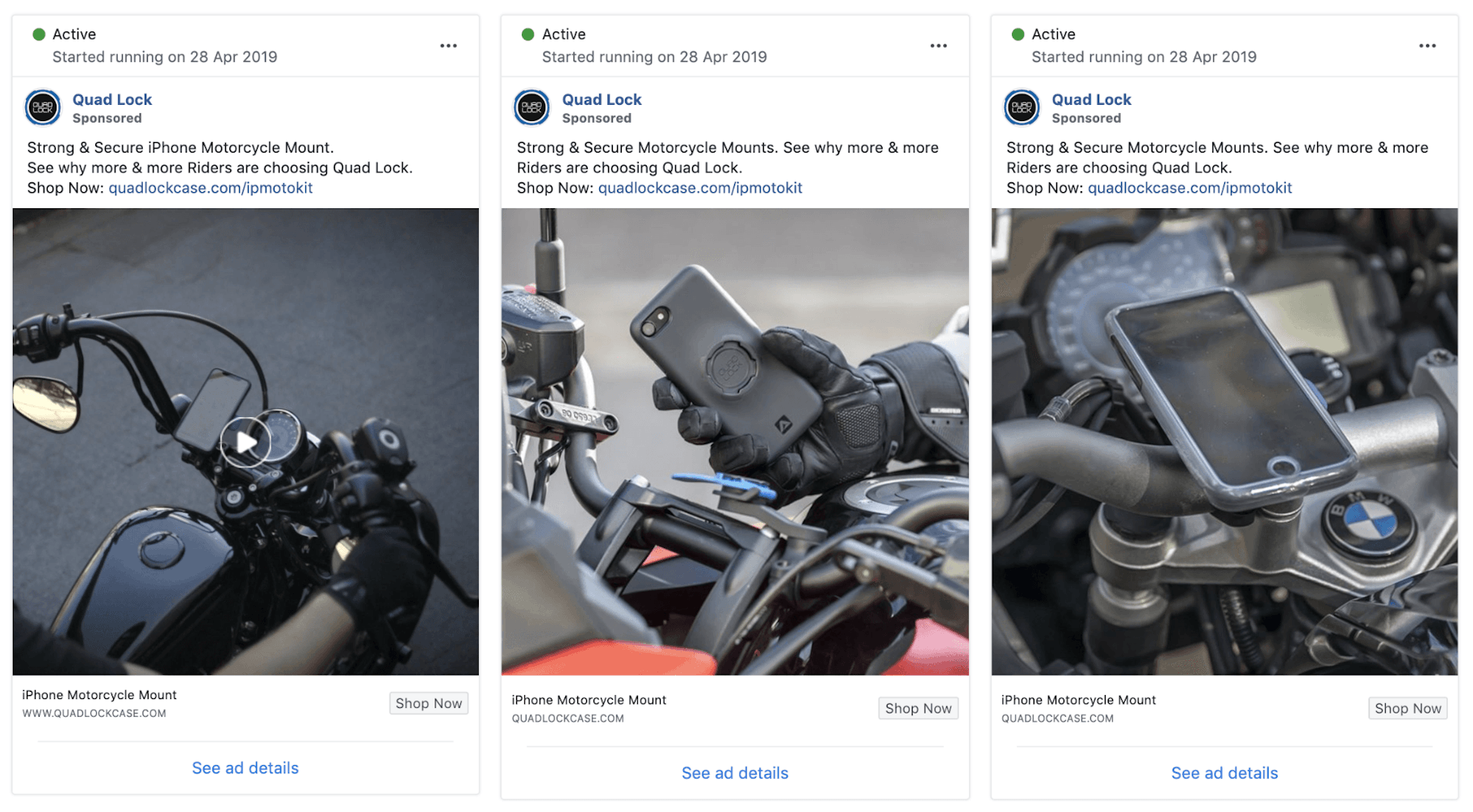
6. Select an Audience for Each Specific Campaign
Each campaign should have a custom target audience.
In other words, you shouldn’t include your entire target audience in every campaign that you run. This will drive up your Facebook advertising costs.
Why?
Well, users will be at different stages in the digital marketing funnel and so, will require different ad messaging.
By segmenting your target audience into sections and subsections, you’ll be able to create highly targeted messaging, offers, and calls-to-action.
The result? Better ad performance – and decreased Facebook advertising costs.
For example, say that you wanted to run a campaign to connect with brand new potential customers. It would be inefficient to also show these ads to people who already Like your Facebook business page.
Instead, you can exclude these users and suddenly your target audience is far more likely to resonate with your messaging.

Facebook provides countless audience targeting options – put them to use!
7. Use Retargeting and Remarketing Campaigns
Retargeting and remarketing are strategies that allow you to advertise to people who have already been exposed to your business in some way.
- Retargeting is the process of displaying ads to potential customers based on their browser cookies (using Facebook’s pixel)
- Remarketing is the process of serving ads to potential customers based on email interactions.
In other words, if someone has visited your website or signed up to your mailing list, you can display ads to them on Facebook.
These people are already familiar with your brand and products, so there’s already a foundation for strong customer relationships.
As a result, retargeting typically results in a higher number of clicks and conversions – and lower Facebook advertising costs.
Facebook provides plenty of remarketing options too.
You can serve ads to people who Like your Facebook page, follow you on Instagram, subscribe to your mailing list, and more.
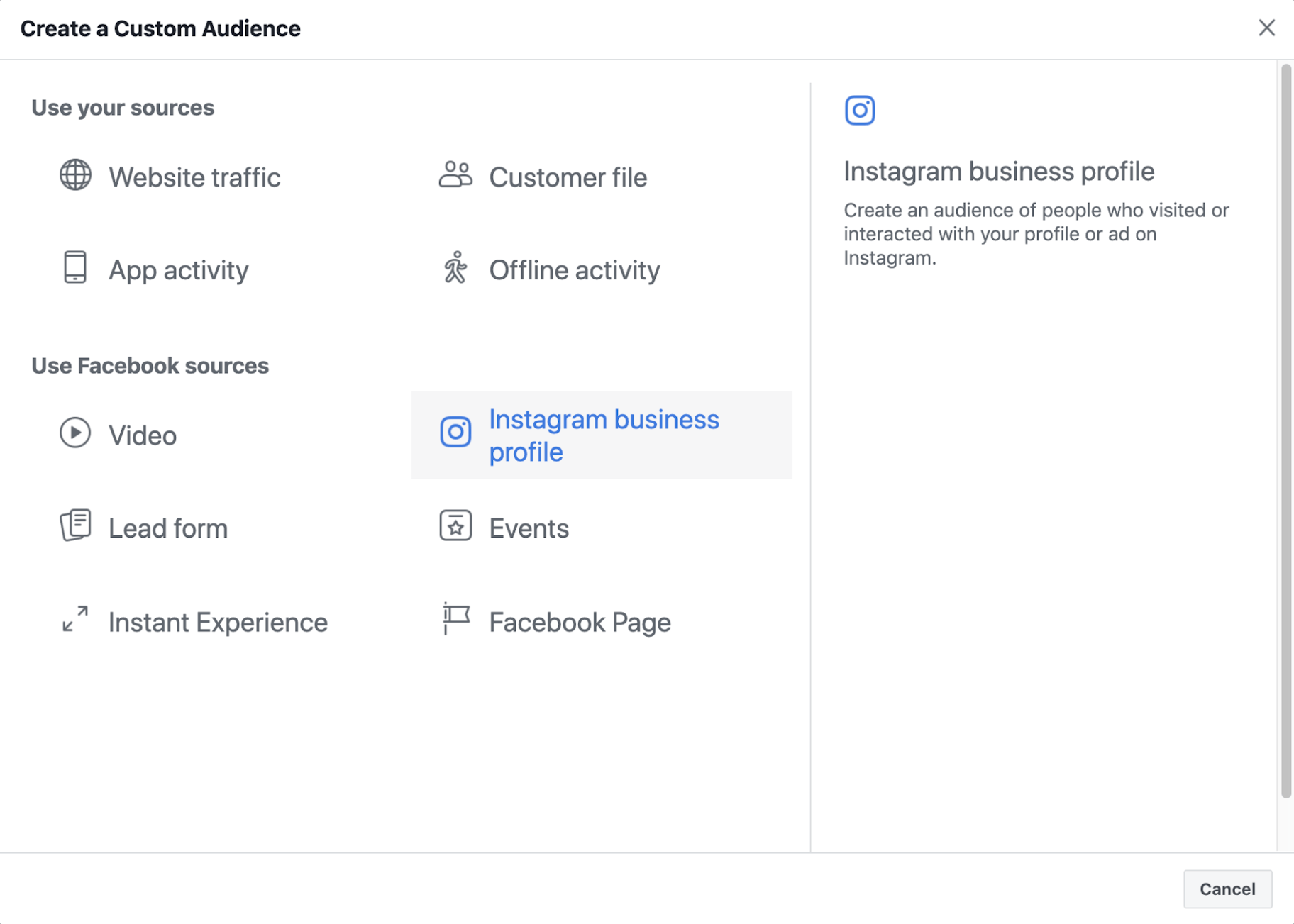
8. Cap Your Bid
This is the simplest way to keep your Facebook advertising costs low.
If you know you don’t want to spend more than $1.00 per ad, you can simply cap your bid to make sure that doesn’t happen.
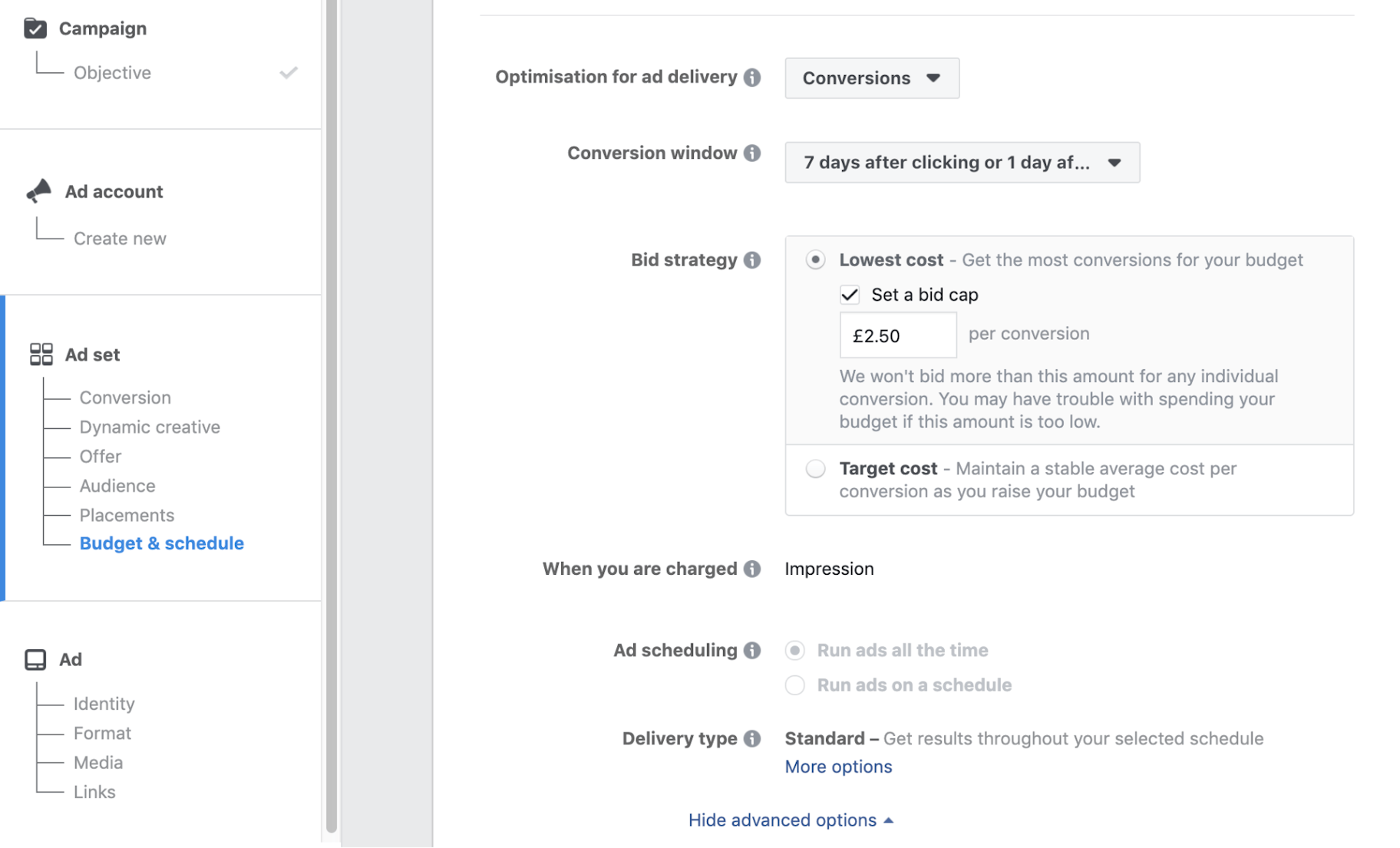
Obviously, this means that you may lose out on potential ad placements.
However, if you have a marketing budget plan and need to keep your Facebook advertising costs in check, capping your bid is the way to go.
Summary: How Much Do Facebook Ads Cost in 2020?
Facebook advertising costs can vary wildly, but it’s reasonable to expect a Facebook advertising cost of around $0.50 to $2.00 per click for most industries.
That said, the only way to know what your Facebook advertising costs will be is to test them for yourself. So run some campaigns and go from there.
Remember, there are six key factors that influence your Facebook ads cost:
- Target audience
- Marketing objective
- Competition
- When you advertise
- Ad placement
- Relevance score
To reduce your Facebook advertising costs, you can:
- Split test
- Focus on one objective at a time
- Maintain high relevance scores
- Maintain low-frequency scores
- Keep your ads fresh
- Select an audience for each specific campaign
- Use retargeting and remarketing
- Cap your bid
How much do your Facebook ads cost on average? Are your costs similar to the averages outlined by the studies cited? Share your thoughts in the comments below!



